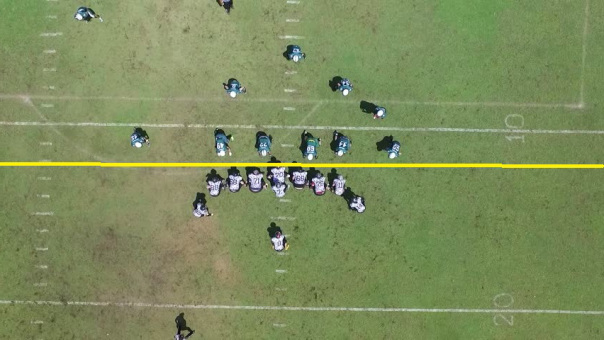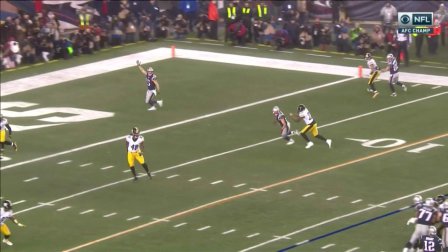It has come to that time of year where many American football* fans are without a team to root for until the Super Bowl when they hope for good commercials. If you are a soccer fan and have a football fan in your life who is interested in learning about soccer, then I have some tips below. (NOTE: Do not try to convert the unwilling football fan. Save your energy for the father-in-law who has grand-kids that play. Trying to convert the uninterested usually backfires.)
The most incomprehensible thing about soccer to most football fans that I’ve spoken to is the offside rule. Luckily there is a pretty easy way to convey the concept using football terms. The key is to take the rule that they already understand and tweak it to help them understand the soccer equivalent. If you’re not a football person, you might first need to brush up your understanding of the carrying game first.
Offside in football is a foul in which a player is on the wrong side of the line of scrimmage when the ball is snapped. This foul occurs simultaneously with the snap. Unlike offensive players, defensive players are not compelled to come to a set position before the snap.

In soccer there is no line of scrimmage nor a “snap” of the ball. Since the ball is almost continuously in play, the rule is a bit harder to police but understanding is all that we’re aiming for now. First of all, only offensive players can be called offside and only in their offensive half of the field (nearest the goal they intend to score on). The line for offside is not a fixed yard line but rather it moves with the last defender** equivalent to the defensive position of safety. (See Below)

So since the ball is almost always in play, offensive players are moving around and can even cross the offside line. A call of offside is made when an offensive player is in an offside position and the ball is played toward him or her. In football terms, the wide receiver cannot run past the invisible yard line of the safety until the ball is thrown by the quarterback. So the timing of streak (go), post and corner routes need to be timed very well. If the ball is not passed before the intended receiver gets by the “safety”, he’ll be offside. Curl and comeback routes can be effective in keeping a player onside. But if he is offside at the time of the pass, receiving the ball in an offside position doesn’t matter (like a defensive lineman who tries to jump back as the ball is snapped).
 The Receiver on the 15 yard line is onside at the time of the pass.
The Receiver on the 15 yard line is onside at the time of the pass.
 The player in the end-zone is offside because he’s beyond the last defender at the time of the pass.
The player in the end-zone is offside because he’s beyond the last defender at the time of the pass.
The player possessing the ball cannot be offside. So a player can dribble through the offside line. Therefore if the quarterback or running back carry the ball forward, they are not offside.
That pretty much sums it up. If I’ve missed anything, please leave it in the comments below and I’ll adjust it. Pass this information along to a football fan that cares to learn.
* I don’t like using the term American football but I do it to avoid confusion. I also dislike using one sport to explain another but have done this
**This statement is partially false. The last defender needs to have the goalkeeper behind them. This is something that soccer fans and even referees get wrong from time to time. Two defenders (one usually being the goalkeeper) need to be between the offender and the goal line. If the goalkeeper goes out of the goal a far distance, one defender is not enough to keep an offensive player onside.
Share this:




